
A complete guide to troubleshoot, test, and replace a bad ignition switch.
Have you ever considered what's inside an ignition switch in your car and how does it actually work? Although an ignition switch may appear simple at first, this device is a crucial component in any car. Just wait until it starts failing and you'll realize that quite quickly. Once an ignition switch becomes faulty, your car will simply not start anymore. Also, as switches installed on recent vehicles become increasingly more complicated with the addition of immobilizer systems, a bad ignition switch can have confusing symptoms, which can lead to faulty diagnosis and unnecessary repairs. In this article, we'll explain how ignition switches work, demonstrate the most common faulty switches symptoms as well as how to test one and replace it if needed.
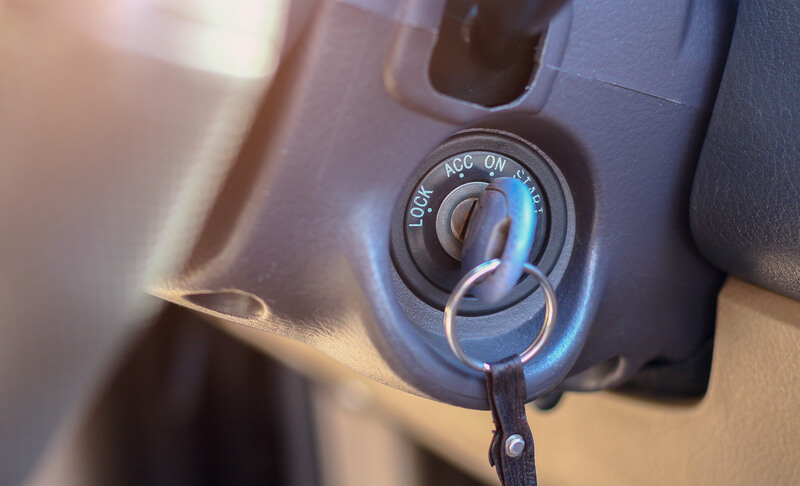
How Does an Ignition Switch Work?
Depending on the car and key lock position, the ignition switch either hides inside the steering column or the dashboard. In some instances, like with Saab vehicles, it could even be located in the center console. However, no matter where it's placed, they all usually work the same: the switch connects to the key lock with a small shaft and moves with it as you turn the key. Ignition switches in modern cars are quite unique, as they combine several functions in one simple and reliable device. In other words, recent ignition switches are actually a set of switches connected into one sequential series.
Take a closer look at the key lock in your car, and you will see it has several marked positions. The first, called "ACC" or sometimes (I), unlocks the steering wheel and activates functions like the audio system and power window regulators. The next position is marked as "ON" or (II), and turns on the dashboard and powers up all the other electrical systems. The last position, called "START' or (III) engages the starter motor, which cranks the engine until it fires up. The "START" position also deactivate all body electrical system to reduce power consumption as much as possible. Doing so will ensure that the starter has all the power it needs to crank the engine even if the car battery is a bit weak.
Inside the ignition switch itself, there is an arm that rotates as you turn the key. Depending on the selected key position, the arm will create a connection between different predetermined electrical circuits. Besides these primary tasks, ignition switches on most modern cars incorporate an anti-theft, or "immobilizer" function. This means it has to read a code from the key before it allows the engine to crank and start. If the immobilizer system can detect or read the code, it will either cut-off the starter, ignition, or fuel system, depending on the car model.
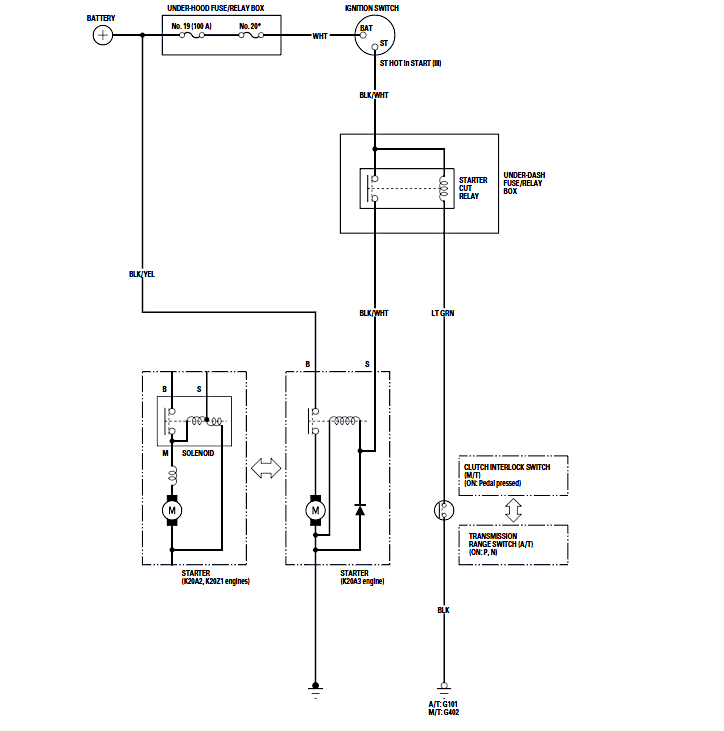
Most Common Bad Ignition Switch Symptoms
Poor Connection/Open Circuit
Because the ignition switch incorporates several functions, there is more than one way it can go bad. One of the most common symptoms is the lack of response from your car when you turn the key. This can happen in any of the key positions and disable some or all functions and operations that come with it. A situation like this shows that there might be a poor connection between one or more of the terminals inside the switch. If only the "START" circuit is affected, the dashboard and all accessories may power up when you turn the key, but the engine won't crank. On the other hand, if the "ON" circuit is open or short, turning the ignition switch might start the engine but fail to trigger some of the relays. In that case, some electrical systems, like the wipers or power-windows might not work.
Damaged or stuck pins
On older vehicles, the pins inside the lock might wear out which may sometimes prevent the key from aligning the pins correctly. When it happens, the key might be difficult to turn or won't turn at all, preventing the engine from starting. As most drivers usually use only one key to start the car while keeping the spare in a safe place, it's not uncommon for one key to wear out faster than the other. Using the spare key to turn the lock may sometimes work. If it doesn't, try carefully hitting the key towards the lock with a small hammer while trying to turn it. Doing so will shake the pins inside the lock and may occasionally fix the problem. However, keep in mind that this is only a temporary fix and nothing assures you that it will work next time.
A Word of Warning
Unfortunately, many other unrelated issues can cause any of the symptoms we have described here. Things like a dead battery or a bad starter may prevent the starter from cranking. A faulty immobilizer system may also cause a crank/no start condition. Be careful not to jump to any conclusions, as issues like this can throw even the most experienced mechanics off course. Following your car manufacturer's recommended troubleshooting procedure will methodically eliminate all potential causes. When in doubt, make sure to take a look for the right procedure inside your car's repair manual. Doing so will always save you both time and money.
Why Do Ignition Switches Go Bad?
Just like any other mechanical or electrical component, ignition switches can suffer from several different failures. For a start, there is normal wear that happens at a gradual rate over the years. Mechanical contacts inside the ignition switch wear every time you turn the key to start or shut down your car. Although this is at a microscopic scale, it still chips away tiny pieces of metal each time. With time, the gap between them becomes so large that it prevents the flow of electrical current. In most cases, this will start as an intermittent problem but will become more frequent.
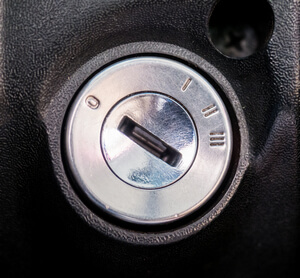
Moisture and corrosion that comes with it can also cause various issues with the ignition switch in your car. As you may know, corrosion and other moisture-related deposits act as electric insulators. When these build-ups are thick enough, they can stop the flow of electrical current. This causes symptoms similar to those of worn contacts inside the ignition switch. The best thing is that you can clean corrosion deposits using some baking soda and a toothbrush. However, this usually requires the disassembly of the ignition switch. Furthermore, many manufacturers these days build ignition switch in a way that they can't be opened anymore which makes it impossible to clean the contacts.
Another common issue with ignition switches is a mechanical failure or breakdown of moving components. The shaft between the switch and key lock or the arm inside the switch are the ones that usually break. This happens when the driver uses too much force on the key when trying to start the engine. The pins inside the ignition lock may also break with time, preventing the key from turning.
How to Test an Ignition Switch
Obviously, different car models will use different connector configurations. However, most ignition switches work the same if only that the terminals may be positioned differently. Once again, you'll need the specific diagram for your car to do this but here's a general procedure:
1. Once you start suspecting there might be a problem with the ignition switch in your car, the first thing to do is to test the internal connections. To do this, you can either disconnect the ignition switch connector under the fuse box or directly at the switch, depending on which is the easiest.
If you decide to disconnect it at the switch, you'll need to first remove the steering column trims to reach the ignition switch connector.
2. Check for continuity between the terminals in each switch position according to the table found in your car's repair manual.
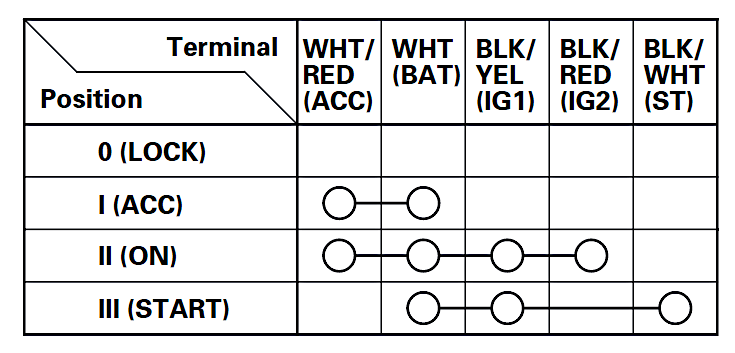
3. If the continuity checks do not agree with the table, the steering lock/ignition switch assembly will need to be replaced.
How to Replace a Bad Ignition Switch
1. On most cars, you'll need to remove the steering column to have enough space to work to replace the ignition switch. If you're lucky, you might be able to just squeeze under the column but it's unlikely.
2. What makes it a bit hard to remove ignition locks is the fact that they are built to prevent theft. If the lock was easy to remove, thieves would have no problem taking it out and start the car using a flathead screwdriver. Fortunately, and as opposed to what's commonly portrayed in movies, bypassing a lock without the key is quite complicated.
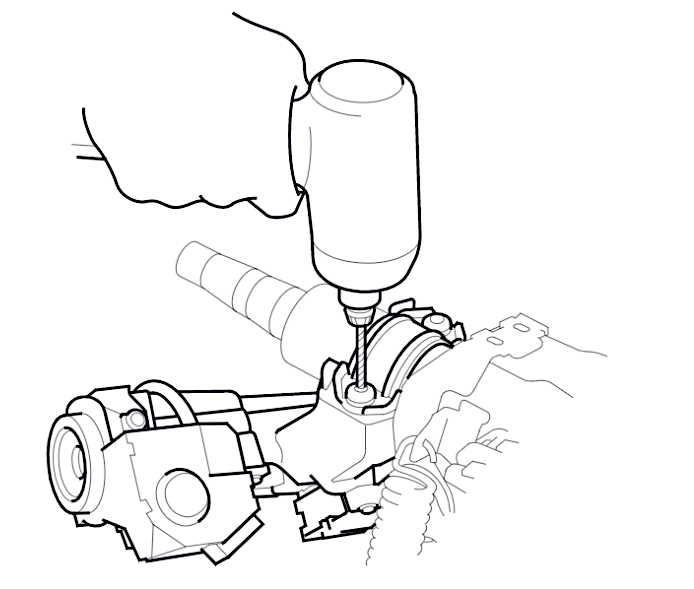
To make sure the lock can't just be unscrewed and removed, manufacturers use shear bolts. This type of fasteners can be screwed using a standard ratchet but their hears will snap and break-off when tightened. This means that, when it's time to remove them, there's nothing left but a round head with no grip. To remove this type of bolt, the easiest technique is to center punch each of the shear bolts and drill their heads off with drill bit. However, be careful not to damage the switch body when removing the bolts.
3. Once the shear bolts are removed, the rest is quite simple. Simply take out the ignition lock and ignition switch body.
4. Install the new switch body without the key inserted.
5. Loosely install the new shear bolts by hand. Never tighten them with a tool unless you are 100% sure everything works. You won't be able to take them off once the heads are snapped-off.
6. Insert the ignition key, and check for proper operation of the steering wheel lock and that the ignition key turns freely.
7. Tighten the shear bolts until the hex heads twist off.
8. That's it!
Frequently Asked Questions (FAQ)
What are the common symptoms of a bad ignition switch?
Common symptoms include the car not responding when you turn the key, intermittent electrical failures, the engine not cranking, and dashboard lights not coming on. In some cases, accessories like the wipers or power windows might not work either.
Can a bad ignition switch prevent the car from starting?
Yes, a faulty ignition switch can prevent the engine from starting, even if the battery and starter are functioning properly. It can disrupt the connection needed to engage the starter motor.
How do I know if my ignition switch is bad or if it's another issue?
Start by checking for other potential problems, like a dead battery or faulty starter. If those are in working order, follow your car’s troubleshooting procedure from the repair manual to pinpoint the ignition switch as the culprit.
Can I replace an ignition switch myself, or should I go to a mechanic?
With the right tools and your car's repair manual, replacing an ignition switch is doable for most DIYers. However, since it can be tricky due to the anti-theft features, if you’re unsure, it might be best to consult a professional mechanic.
How long does it take to replace an ignition switch?
Replacing an ignition switch can take anywhere from one to three hours, depending on your car’s make and model and your experience level. Some cars require removing the steering column, which adds complexity.
Understanding Ignition Switch Issues
Car owners and even mechanics often overlook ignition switches when diagnosing starting problems, largely because these devices are typically simple and reliable. Ignition switches are built to last and rarely fail, which is why they can be taken for granted. However, despite their robustness, they’re still mechanical components that aren’t immune to failure over time. Normal wear and tear, moisture-induced corrosion, or even a mechanical breakdown can all cause the ignition switch to malfunction.
When your ignition switch starts to fail, you’ll likely notice symptoms like the key not turning or an unresponsive engine when the key is turned. But don’t jump to conclusions—other problems, like a dead battery or a faulty starter, can mimic these symptoms, making the diagnosis tricky. That’s why a methodical approach is critical. Instead of guessing and potentially spending money on unnecessary repairs, follow the troubleshooting steps laid out in your car’s repair manual. Doing so will help you pinpoint the problem quickly and accurately, allowing you to fix what’s really broken—and save yourself from the frustration and expense of throwing parts at the issue blindly.
